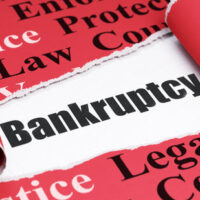A Chapter 7 Bankruptcy Overview

The Chapter 7 bankruptcy process offers honest yet unfortunate debtors a fresh financial start, typically within six months. Most debtors won’t need to appear in a courtroom; instead, the process is administratively handled, with the bankruptcy trustee playing a key role in evaluating the case. Most unsecured debts, such as medical bills and credit cards, are discharged without a formal court hearing, provided there are no objections from creditors or the trustee, and all bankruptcy requirements are met. Beyond attending a mandatory meeting with creditors and completing a financial management course, debtors must ensure all necessary documentation is submitted and cooperate with the trustee’s inquiries. Essentially, after fulfilling these requirements, debtors await the final discharge from the bankruptcy court.
The process is even easier if an Irvine bankruptcy lawyer is at the helm. Unlike non-lawyer bankruptcy petition preparers, attorneys do more than fill out forms. They give clients solid legal advice throughout the process.
Qualifying for Chapter 7
In 2005, lawmakers added the means test requirement to the Bankruptcy Code. A Chapter 7 debtor’s income must be below the average income for similarly sized families in that area. As of November 1, 2023, the average income for a California family of four was $123,451.
If your income slightly exceeds the threshold for Chapter 7 bankruptcy eligibility, you may still qualify. A bankruptcy lawyer in Santa Ana can assist by meticulously analyzing your actual household income and expenses to present a clearer picture of your financial situation. This approach is particularly relevant in California, where living costs can vary significantly across different regions.
If your income is significantly above that level, then quite frankly, you probably don’t need to file Chapter 7. Other options are available, such as non-bankruptcy debt reduction negotiations or, if back taxes are a problem, an IRS-sponsored repayment program.
In addition to formal qualifications, practical considerations also play a role in the bankruptcy process. For instance, if the debtor’s financial statements show a surplus rather than a slight monthly deficit, the trustee—who oversees the bankruptcy case—may inquire further into the debtor’s financial situation to ensure all information is accurate and complete. Similarly, if a debtor chooses to reaffirm a significant number of debts voluntarily, it could prompt additional scrutiny from the trustee regarding the debtor’s ability to manage these obligations post-bankruptcy. Further details on these aspects will be discussed below.
Filing Bankruptcy
Many people file bankruptcy primarily to take advantage of the Automatic Stay. Section 362 of the Bankruptcy Code prohibits most creditor adverse actions, such as:
- Repossession,
- Wage garnishment,
- Foreclosure,
- Eviction, and
- Creditor harassment.
Creditors may only bypass the Automatic Stay under limited circumstances, usually a threat to the collateral (e.g. I’m going to burn the house down).
Furthermore, bankruptcy protects your most important financial assets from seizure and liquidation. The formal asset exemptions include:
- Home equity,
- Motor vehicle,
- Retirement account,
- Government benefits, and
- Personal property.
The 341 Meeting
For practical purposes, most Chapter 7 bankruptcies end after the 341 meeting, which usually takes place about six weeks after filing.
The trustee verifies the debtor’s identity, asks a few preset yes/no questions, and reviews financial documents, such as tax returns and W-2s. Assuming the trustee finds no red flags, such as drastic income changes, the trustee usually approves the bankruptcy for discharge.
Reaffirmation agreements, when excessive, can complicate the bankruptcy process, as previously discussed. It’s common for Chapter 7 debtors to voluntarily reaffirm obligations such as car loans and cell phone contracts to retain possession of essential assets and services. However, choosing to reaffirm debts traditionally dischargeable in Chapter 7, such as credit card debts and medical bills, might raise concerns about the debtor’s understanding of the discharge process and their financial strategy post-bankruptcy. Such actions could potentially signal to the trustee and the court that the debtor may not fully benefit from the debt relief Chapter 7 is designed to provide.
Contact a Diligent Orange County Lawyer
Regardless of your financial problems, there’s usually a way out. For a free consultation with an experienced bankruptcy lawyer in Santa Ana, contact The Law Office of Charles A. May.
Source:
supremecourt.gov/opinions/22pdf/21-908_n6io.pdf
